We caught up with the brilliant and insightful Kendra Lee a few weeks ago and have shared our conversation below.
Hi Kendra, thanks for joining us today. We’d love to hear about a project that you’ve worked on that’s meant a lot to you.
Even before I transitioned to a digital artist, I started a project called the “The Strangest Fruits,” inspired by Abel Meerpool’s poem “Strangest Fruit.” I wanted to create a series of images where I would reclaim the meaning behind black female lynches in the United States and revision their experiences as evidence of the “fruits,” spirit, or generational characteristics black women can possess, and pass through our bloodlines. As I began researching the different accounts of black female lynches, I was ultimately trying to look for ways to conceptualize how to heal from the pain of those unjust murders. Being a black woman living in Texas, always left me with wanting know the different ways we are connected through our pain, in hopes to truly begin to heal from the misplaced societal narratives black women are forced into.
While researching black female lynches, I tried to look for common themes or motifs surrounding each story. I started to think of “fruits” or characteristics of black women that are generationally inherited throughout time, based on how we occupy space in society. I found myself scourging any viable resource I could find, whether it was a first hand account transcript from eye witnesses; old newspaper articles; and even photographs/postcards, just to find the common thread that connected us all. I eventually decided to narrow down the stories based on the themes I discovered that seemed relevant to our experience as black women today, thus being generationally felt throughout time.
The first installment of my project “The Strangest Fruits,” features four images. First is “The Strangest Fruit: Inheritance,” inspired by Mary Turner’s story. Mary Turner was lynched in Georgia, after she called out the people who lynched her husband earlier. She was apparently 8 months pregnant at the time of her lynching, but that didn’t deter the people who felt offended she’d even speak out against them. She defied the status quo and left us an Inheritance of defiance, black women often have to defy the societal narratives forced on them.
The second image is “Innocence,” inspired by Mary Dennis and Stella Young. Both women would be lynched, along with four other black men, in what would be coined the “The Newberry Six” lynching in Florida. It was alleged that both women, along with the other men, helped Stella Young’s husband escape town after he was accused of murdering a Constable. A mob of people took it upon themselves to orchestrate a town search for Stella Young’s husband and anyone who could have assisted in his escape. I reclaim this moment in time as one of Innocence as it is believed they were lynched, without any due process of the law, reminding us that often times a black women’s innocence is conditionally recognized in society, while our lived truth of being innocent gets ignored.
The third image titled “Protection,” portrays Laura Nelson and her son’s unjust lynching. Laura Nelson, along with her son would be lynched over a bridge in Oklahoma. Some sort of confrontation occurred involving Laura Nelson, her son, and the responding law enforcement who originally arrived to investigate a theft. The officer would be shot and subsequently die, so a mob decided Laura Nelson along with her son would have to pay. It is rumored that Laura Nelson would be the one to shoot law enforcement. So I reclaim this moment in time and see the “fruit of Protection,” as Laura Nelson was lynched doing what many other black mothers ultimately aim to do, protect their own.
The last image in this series is inspired by Cordella Stevenson. Titled, “Acsension,” it portrays what black women such as Cordella Stevenson, and even the other women featured in this collection have had to do in the face of their own mortality. Cordella Stevenson was lynched in Mississippi, after being kidnapped at gun point, sexually assaulted, and hung on a tree near the M&O railroad line. I reclaim the moment in time as a reflection of a black women’s need to constantly ascend from the false narratives, crass stereotypes, and societal injustices we face everyday. Cordella Stevenson had to know her fate once the mob stormed her home and her husband fled. I questioned how to we find peace while looking at our pain? Black women must ascend above it all, finding peace in knowing we’ll overcome or get to a space where our peace is ensured.
To further the idea of reclaiming these horrific moments in time, while vending, I sell prints of each image as postcards, as a tangible way to remind people of our past.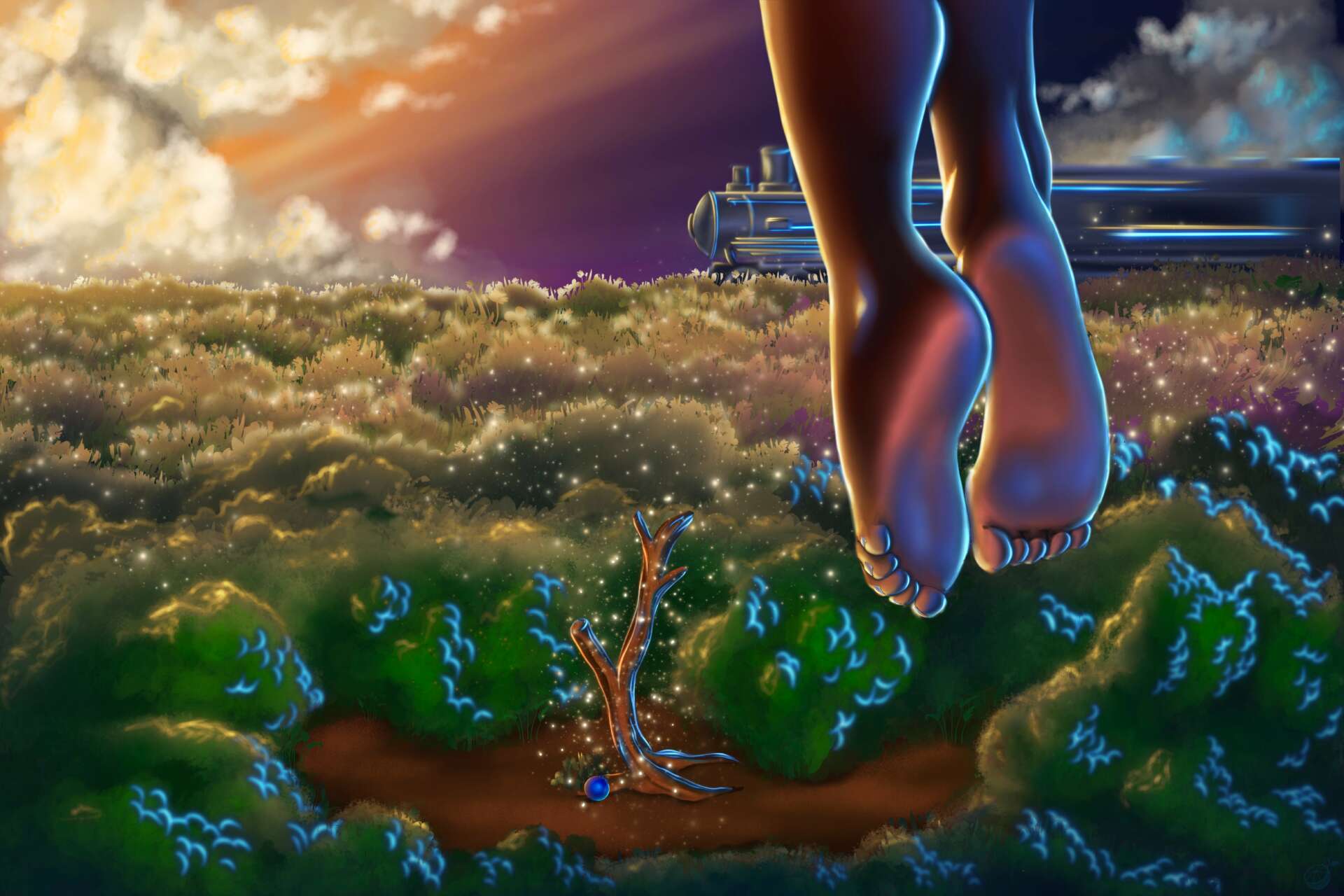
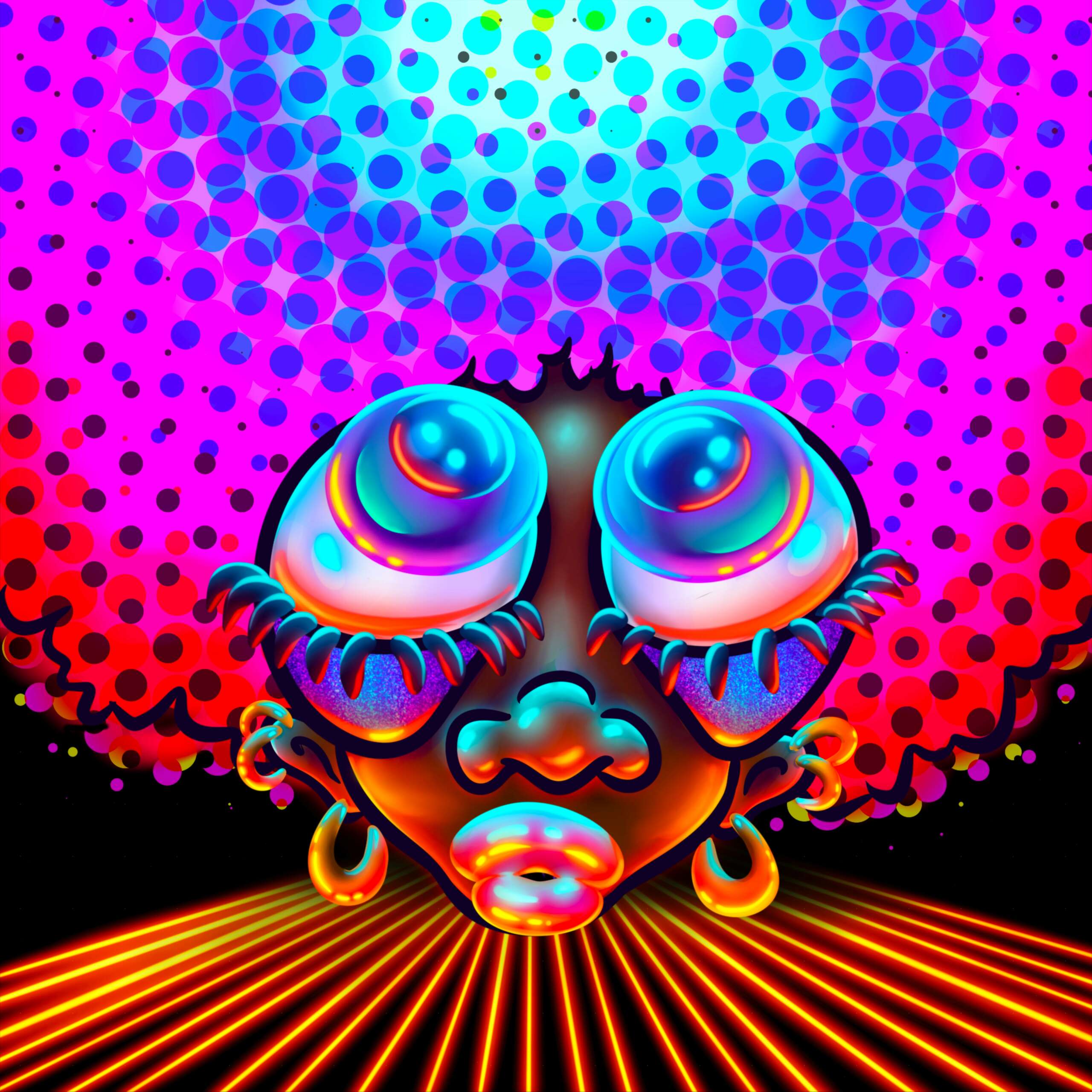
Great, appreciate you sharing that with us. Before we ask you to share more of your insights, can you take a moment to introduce yourself and how you got to where you are today to our readers.
I am a native Austinite, true product of the 90s, and will admit art didn’t come into the foreground of my life until adulthood. Art had always been in the background as a hobby, and I can admit I was told art wasn’t a career worth relying on. But the call to art had me by the chokehold. Any school project requiring a tri-fold display, best believe I was going to make it into art. Any powerpoint presentation, or opportunity to showcase art, I took advantage of, even joined an art fraternity in college. But now looking back, I can honestly say that my experiences have aided me in putting myself out there as digital artist now. I started my art business, Blackfruit, in March of 2022. I set out to showcase digital art where you could often see the black female experience in colorful hues, in graphic and bold images, with details you could get lost in.
The meaning behind Blackfruit, is inspired by Aber Meerpool’s poem, “Strangest Fruit.” Inspired by his imagery, I envisioned Blackfruit as the product of the ancestors or strange fruits, who passed before us and how we may very well continued to be perceived as less than because of the color on the outside, but we are ultimately irresistible, once you get a taste of our essence.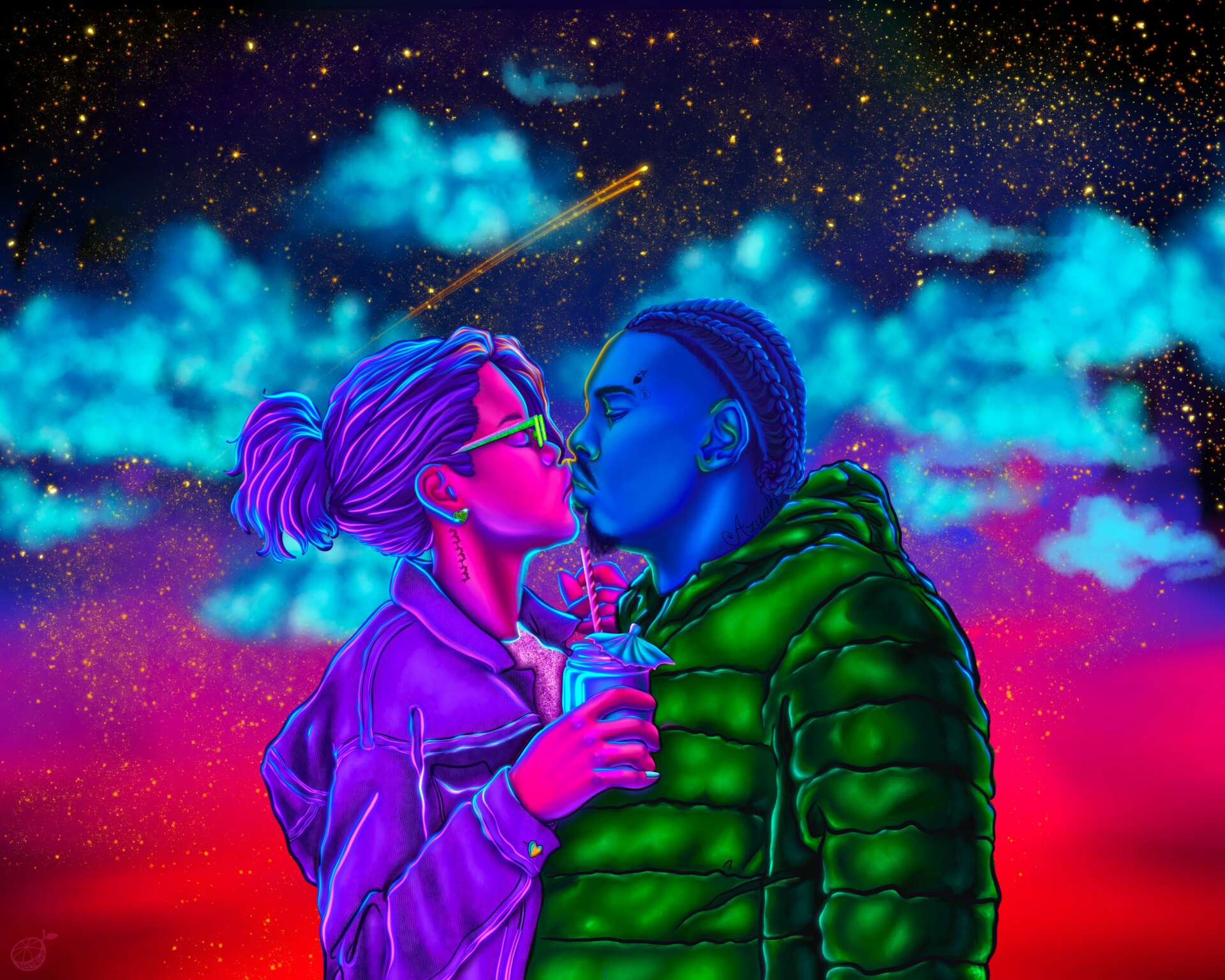
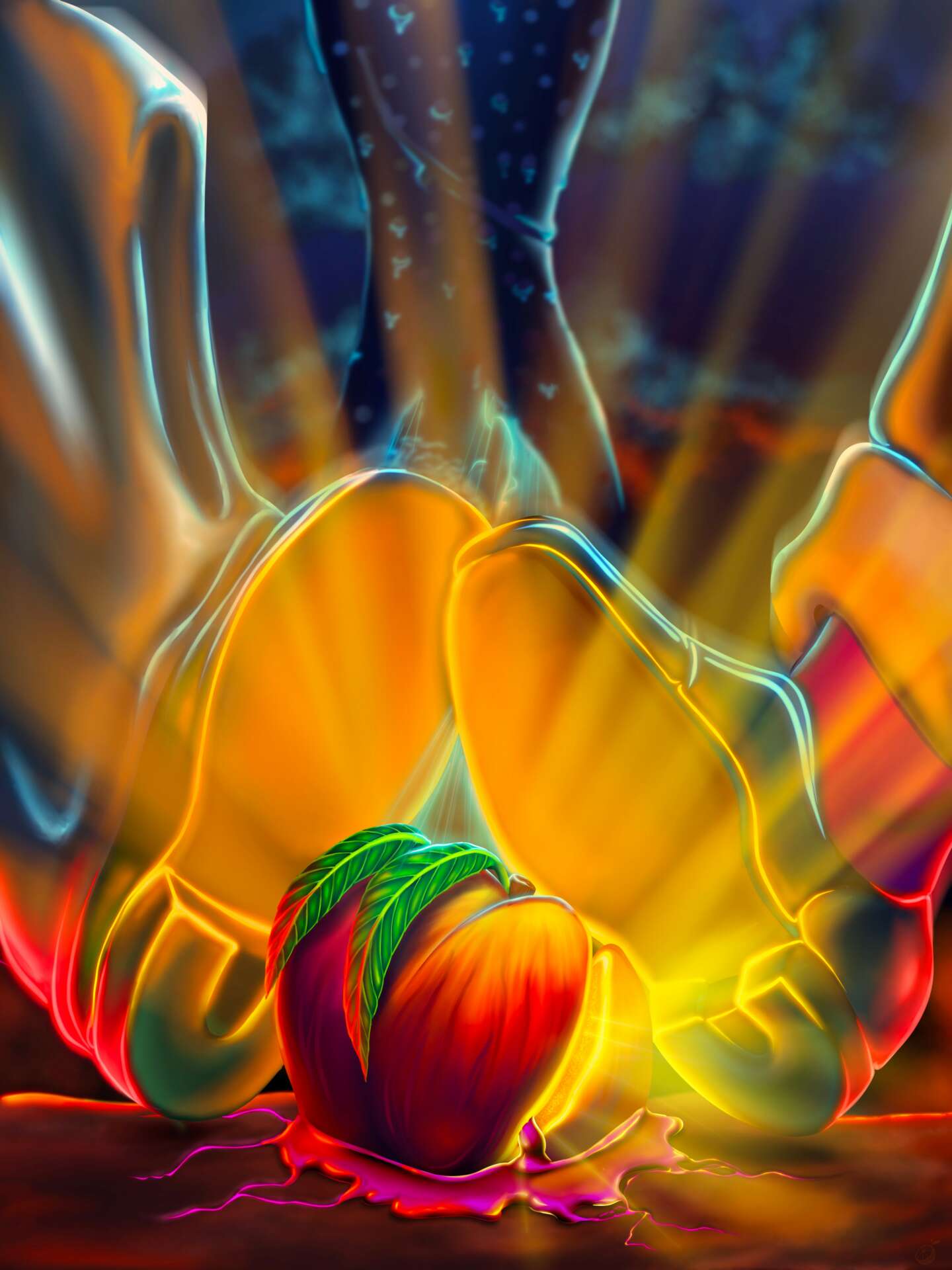
Can you share your view on NFTs? (Note: this is for education/entertainment purposes only, readers should not construe this as advice)
A a digital artist, I was slower to come around to the idea of NFTs. Back when I initially heard about NFTs and saw what common art NFTs looked like, I didn’t think it was the right time for me to try and enter Web3. Fast forward a few years to these last two years, and I am learning how to navigate Web3 and the art NFT space from a place where I feel I can have the most impact. Art NFTs can provide an amazing opportunity for artists, but there is still a large need for more diversity, equity, and awareness of artist of color in the Web3 space. There is also a great need for more transparency within the space as a few prominent NFT projects are facing challenges, and thus having to also face the backlash that comes with not being clear to supporters. Truly, I see a need for more community driven projects centered around actually giving back, rather than money grabs for NFT art traders in the space.
Entering the NFT game, I knew I wanted it to be centered around community and bring people together. Back in October of 2022, I joined an incubator in Austin, that featured a Web3 cohort. While participating in the cohort, I researched, spoke with people in the Web3 space, and ultimately developed a Web3 initiative surrounding Austin specifically, and honoring the “weird” creatives that made Austin the “weird” city it was known for. The initiative is titled “Bring Back the Weird,” where 15 people, places, or hidden gems will be featured in portrait style art as NFTs, in hopes that proceeds from sales can go back into the creative Austin community. While most art nft projects either center around personal pieces, or larger generative art projects, I aimed to stand out, as Austin has Web3 communities looking to expand Web3’s influence, so I thought why not try and build a bridge to the community as a creative and see if we can bring the two together to “Bring Back the Weird.”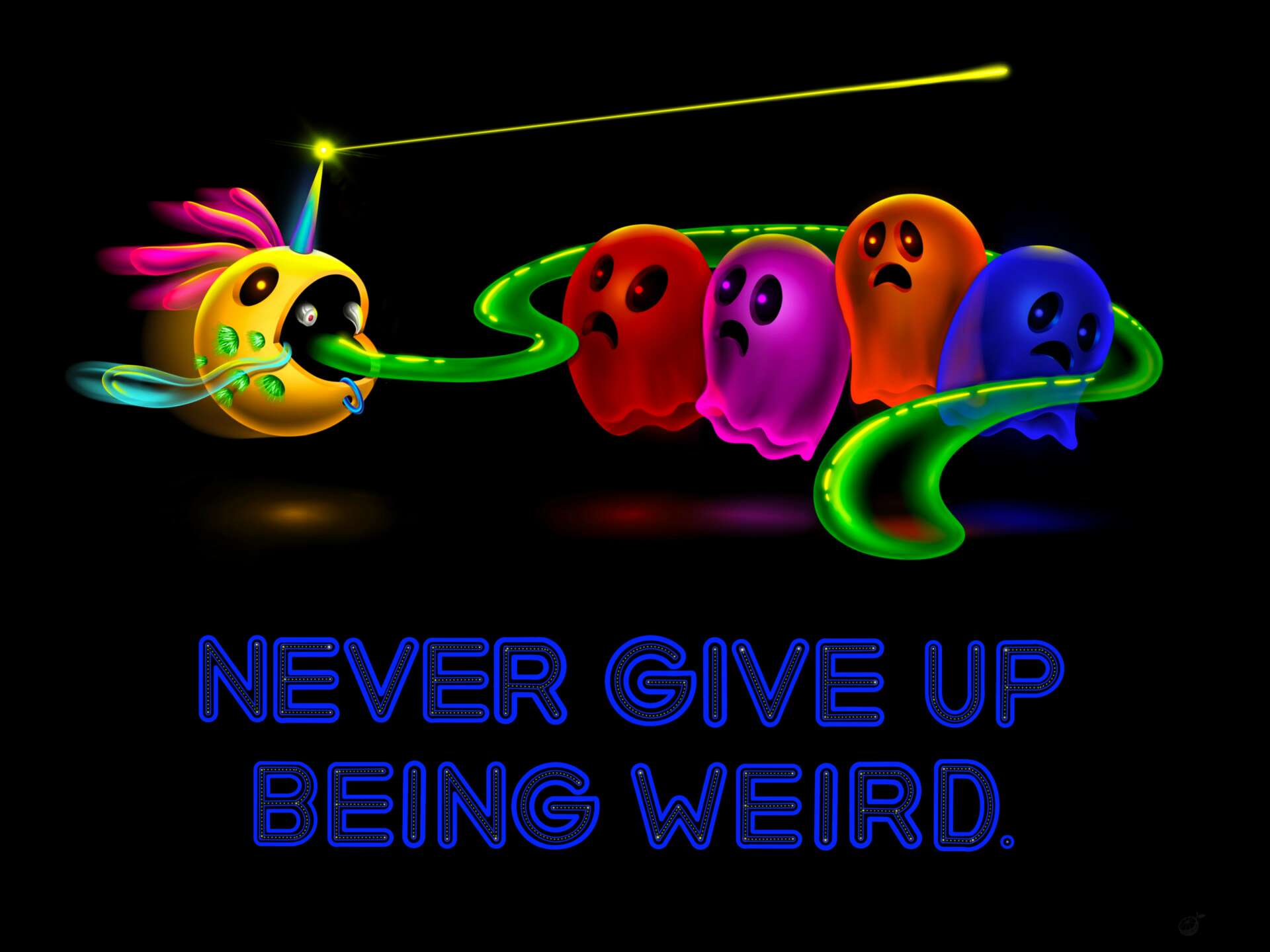
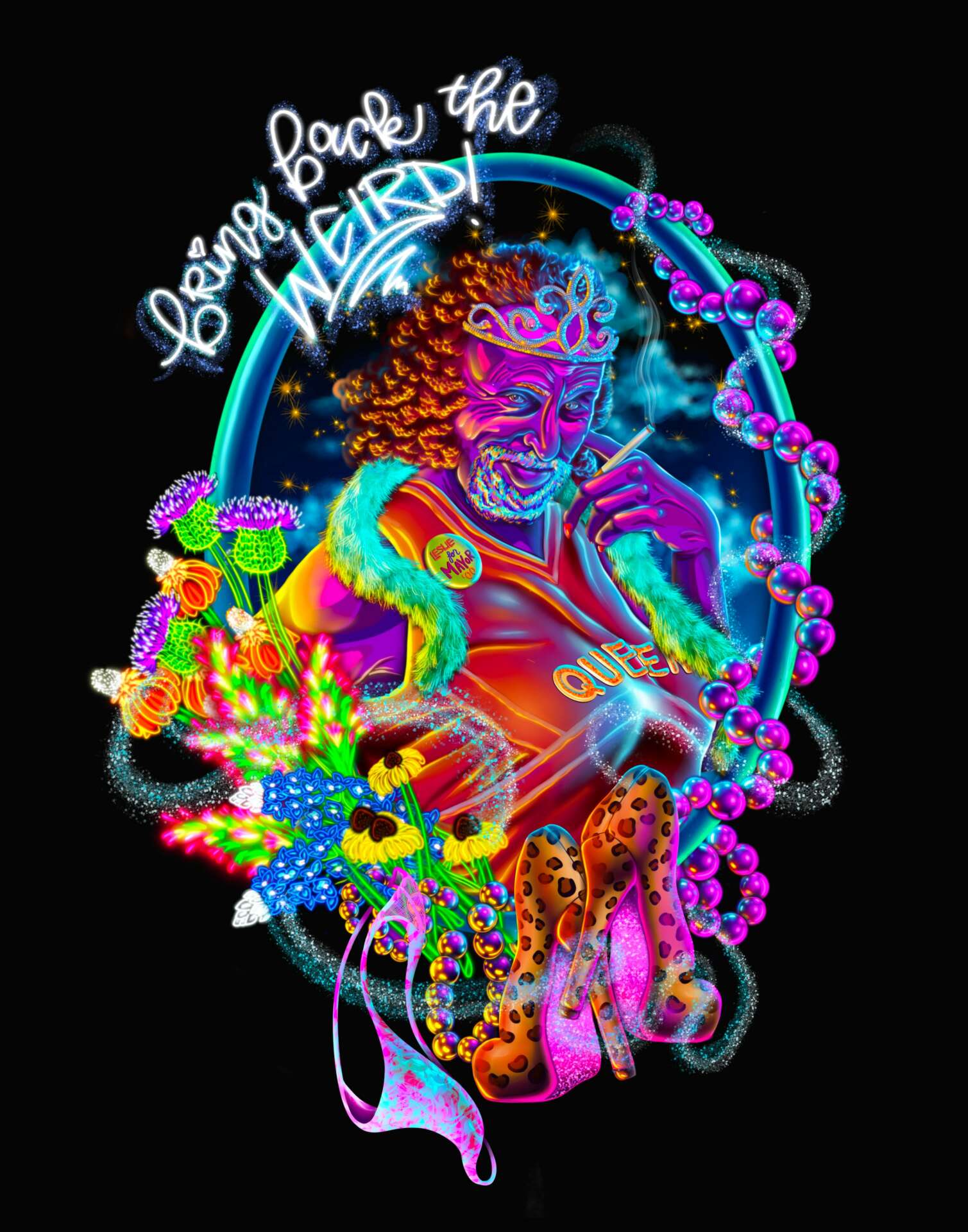
What do you find most rewarding about being a creative?
The most rewarding aspect of being a creative, is two fold for me; one the actual creative process and the connection you make with your audience. The creative process, from imaging the art, to executing the art, all comes as a rush to me when I am creating. Most times, I imagine an image and approach drawing the image like a math problem, where I break everything down into its most basic form, and then build on it. It becomes exciting to get closer to finishing what you’re creating, almost as if you have to help yourself from not rushing, just because you are ready to see the finish product. Being able to take something from my imagination and bring it to life through art, makes the art making process so rewarding and worthwhile, but its the connection after everything is said and done, that fuels my desire to be an artist.
Talking wasn’t my strong point growing up, but connecting with people through art was. Being able to connect to a total stranger through art, seems to bypass the usual familiarities and gets straight to the soul of some people. For that, I live for. The power to connect with someone without saying a word, will always stand out to me, since art seems to transcend different levels of communication that can occur between two beings. 

Contact Info:
- Website: blackfruit.art
- Instagram: @blackfruitart
- Facebook: @blackfruitart
- Linkedin: @blackfruitart
- Twitter: @blackfruitart
- Youtube: @blackfruitart
- Other: TikTok: @blackfruitart


